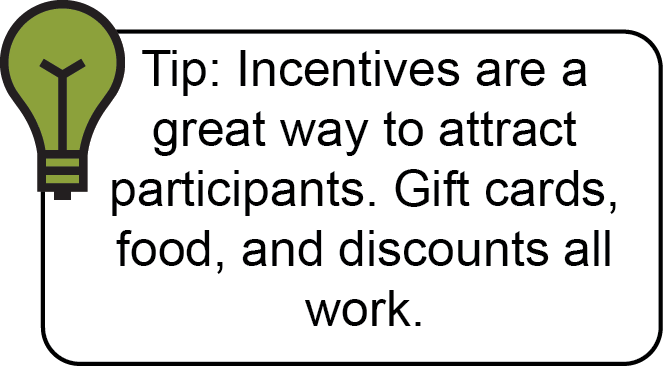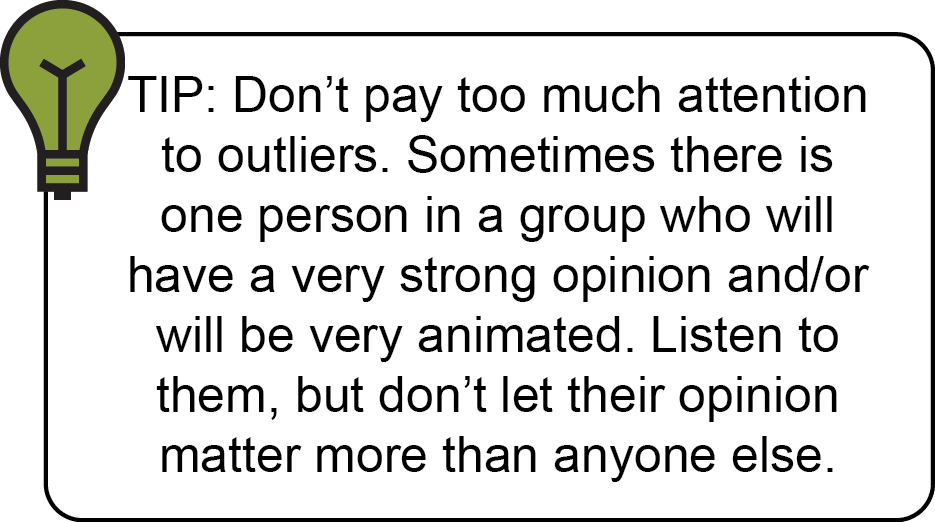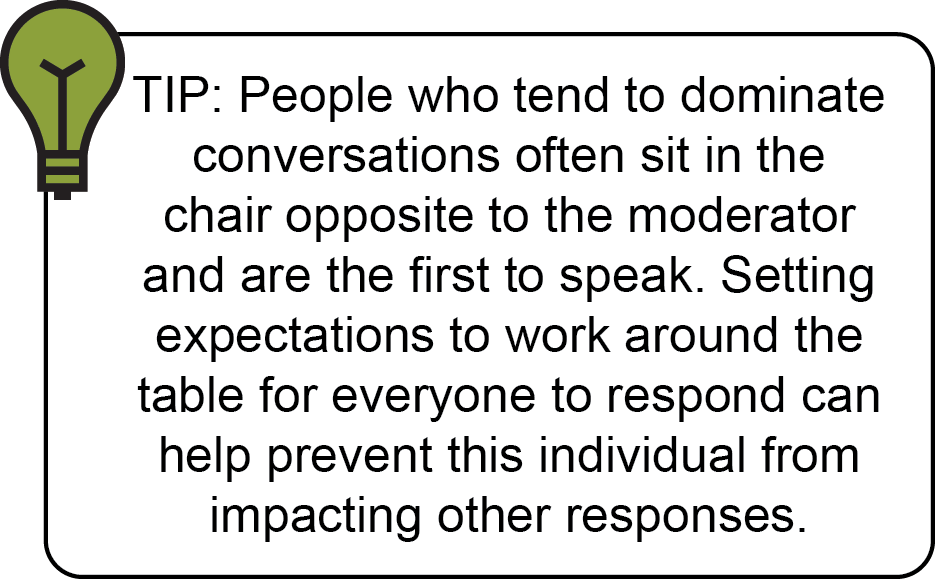 In 2015, Bud Light printed beer cans with the slogan, “The perfect beer for removing ’no’ from your vocabulary for the night.” The marketers who came up with the phrase probably intended to create a fun, lighthearted message, but after protesters pointed out it looked like the company was condoning rape, drunk driving, and other unacceptable behavior, Budweiser quickly apologized and withdrew the cans.
In 2015, Bud Light printed beer cans with the slogan, “The perfect beer for removing ’no’ from your vocabulary for the night.” The marketers who came up with the phrase probably intended to create a fun, lighthearted message, but after protesters pointed out it looked like the company was condoning rape, drunk driving, and other unacceptable behavior, Budweiser quickly apologized and withdrew the cans.
If only they’d run the slogan past a focus group, they could have spared their reputation—and their budget. Chances are that someone in the focus group would have pointed out that the slogan was offensive and Budweiser wouldn’t have printed the cans.
Want to know what people really think about your idea before you launch it? Run it past a focus group first.
What is a Focus Group?
Focus groups are meetings of approximately 6-10 people who are asked to respond to a series of focused questions, products or images. When planned and moderated effectively, the back-and-forth in a small group setting can provoke honest emotions and deep observations that the individuals might not have shared on a written survey.
Of course, focus groups can also go very wrong. A single “buttinsky” or outlier can overwhelm the group or shut down conversation. And you can get into serious trouble if you assume that one focus group is representative of an entire population.
What Are Focus Groups Good For?
Focus groups gather qualitative, or subjective, information from the participants. These groups are typically used to test advertising materials, determine brand perceptions, discover unmet needs, develop initial questions for a survey, or further investigate survey findings.
Focus groups shouldn’t be used for quantitative research, such as opinion polls or anything where you want to be able to generalize about a larger population. The sample sizes are too small to accurately reflect the larger group.
Therefore, to decide if a focus group is right for you, define the type of question you want to answer. If you want to measure what percent of the population has heard of your brand (brand recognition), you need to conduct some type of quantitative research, such as an online survey. If you want to know how people feel about your brand (brand perception), a focus group could be the way to go.
Choosing Participants
Before you recruit focus group participants, you should decide what type of people you want in each group. In general, it’s good to recruit people who share similar characteristics for each group. For example, if you’re testing an advertising campaign for school lunches, you might choose to recruit parents under 30 years old for one group and parents who are 31 and older for another group. That way, you can compare responses from people with similar life experiences and needs.
type of people you want in each group. In general, it’s good to recruit people who share similar characteristics for each group. For example, if you’re testing an advertising campaign for school lunches, you might choose to recruit parents under 30 years old for one group and parents who are 31 and older for another group. That way, you can compare responses from people with similar life experiences and needs.
The characteristics that you want to recruit for will vary according to the questions you’re asking. You may want to create a “screener,” or a list of questions, that potential participants must answer in advance, so you can find people with the desired characteristics.
The ideal size of a focus group is between 6 and 10 people. Anything below 6 doesn’t offer enough feedback; once you get more than 12 or so people, it’s difficult to control group dynamics. You’re likely to get some no shows, so it’s always good to recruit a few extras.
If you’re just testing initial reactions to a concept or product, 1 focus group may be enough. If you have the resources, it’s always helpful to run 2 groups with similar participants. That way, you can assess whether perceptions are consistent from one group to another, If you’re able to conduct 4-8 focus groups, you cam compare reactions from different types of people, such as women vs. men, young people vs. baby boomers, or Midwesterners to Californians. Once you start to hear the same perceptions repeated from multiple groups, you’ve probably done enough.
Logistics
Setting up the room correctly will help you get better focus group results. If you’re able to hire a professional moderator and rent a focus group facility, you’ll be able to observe the group behind a two-way mirror. This will help you gather more objective feedback. If you don’t have the budget for this, however, you can make almost any setting work.
At minimum, the focus group should take place in a comfortable room with good temperature control and a large table that allows the moderator to see everyone. Place a name card on the table in front of each participant. If you’re offering food, serve it before the session starts, so it’s not a distraction during the session, but make water available throughout.
The materials you’ll need will depend on the type of research you’re conducting. If you want written responses, distribute pens and paper; if you’re testing visuals, you’ll need a projector or a notepad and an easel; if you’re testing an application, you may need equipment, such as laptops or tablets. Be sure to test your AV equipment ahead of time, so you don’t waste time during the session.
Most importantly, record the session. Video is ideal, but even audio is useful. The responses you receive convey a lot of information from tone, body language, facial expressions and more. It’s tough to catch everything in one go. If you can’t record it, assign someone to take notes.
Execution

This is the trickiest part of running a focus group. If possible, hire a professional moderator to write your focus group script and run the session; if it’s not in your budget, you can probably find a colleague who has experience running focus groups.
A good moderator will be familiar enough with the subject to be able to ask follow-up questions, but isn’t directly connected to your company or cause. Participants are less likely to provide critical feedback when they are worried about offending you.
Developing specific directions and questions with follow-ups ahead of time will help the focus group run smoothly. The person who is moderating should have a focus group “script,” but be able to adjust it on the fly. The moderator should ask straightforward questions, keep their voice and body language neutral, get input from everyone, prevent any individual from dominating the conversation, and avoid letting one person’s ideas have undue influence on anyone else. A skilled moderator will alternate between calling on individuals and asking open ended questions to the whole group.
questions, keep their voice and body language neutral, get input from everyone, prevent any individual from dominating the conversation, and avoid letting one person’s ideas have undue influence on anyone else. A skilled moderator will alternate between calling on individuals and asking open ended questions to the whole group.
Summing Up
Focus groups are a relatively inexpensive way for you to get feedback that your family, friends, and even colleagues may not be willing or able to provide. Testing your concepts in front of a group can be a very effective way to avoid making embarrassing and costly mistakes.



